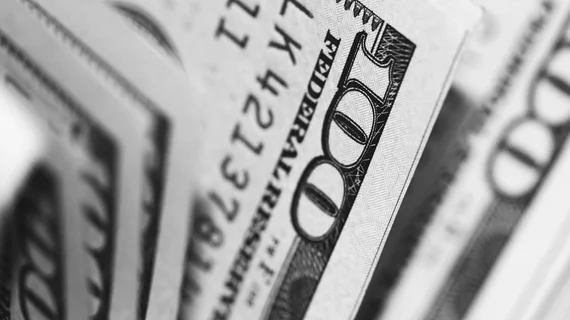Radiologists earn about 81% of their potential bonus, 14 percentage points higher than the average across all physician types.
The majority of imaging physicians (67%) collect their entire incentive payment. But the next highest proportion only took home 25% of their bonus or less, according to the 2020 Medscape Radiologist Compensation Report, released on Wednesday.
Medscape gathered its findings after surveying more than 500 physicians in the specialty between October and February. The news website also released its full compensation report across all physician types last week, placing rads’ current salary at $427,000 including incentives, while acknowledging the pandemic has likely changed those numbers.
Radiologist bonuses on average account for about 18% of their pay, which is higher than the 13% across all 17,461 physicians surveyed, the new analysis found. As noted in the initial report, most incentive programs are based around profits and productivity, and it’s likely radiologist pay has been dragged down by the widespread downturn in imaging. About 55% of all practices types have reported a decrease in revenue, and 60% a dip in patient volume, the report noted
“Amid the COVID-19 pandemic, physicians have been struggling through intense challenges caring for patients while trying to protect their own and their families’ health and well-being,” Medscape said in its radiology report. “Doctors’ most critical concerns are those involving life and death. Still, while confronting this crisis, salary and income are important to one’s career and livelihood.”
Another 11% of radiologists said they earned 76%-99% of their incentive. And 78% of rads overall achieved more than three-fourths of their bonuses. An expert with recruitment firm Merritt Hawkins told Medscape that most physicians typically do not receive all of such perks, with employers concerned about violating Stark Law provisions against self-referrals.
About 29% of radiologists surveyed said their incentive has influenced them to increase their hours, while the majority said it has had “no effect” on time spent on the job.
Medscape also noted a gender pay gap in the specialty, with male radiologists earning $438,000 on average, 14% more than the $386,000 tallied by female physicians. The gap is smaller, however, than the field overall—with male specialists tallying 31% more than women, comparable to last year’s figure of 33%.
Here are a few more interesting tidbits from the report:
- Female radiologists on average spent about 34.5 hours seeing patients each week, compared to 32.5 for men. That compares to an average of 37.9 hours across all physicians surveyed.
- 28% of radiologists said they use physician assistants at their practice, while 22% deploy nurse practitioners. The majority said they use neither, at 63%.
- About 52% said that NPs and PAs have increased profitability at their imaging practice; 42% said they have had no effect, and 6% said they’ve decreased profitability.
- About 85% of radiologists surveyed have no plans to stop serving publicly insured patients. Meanwhile, 4% said they plan to stop taking new Medicaid patients, and 4% are planning to stop treating some or all of their current Medicare customer base.
- The large majority of radiology practices rely on health insurance for their income, at 85%. About 47% participate in fee-for-service medicine; 30% accountable care organizations, and 5% operate cash-only businesses.
- Half of rads said they expect to participate in the Merit-Based Incentive Program, while 14% said they expect to participate in alternative payment models.
- A quarter of radiologists cited “having so many rules and regulations” as the most challenging part of the job. Another 22% cited long work hours; 18% said “worrying about being sued,” and 13% noted difficulties getting fair reimbursement, or dealing with insurers.

